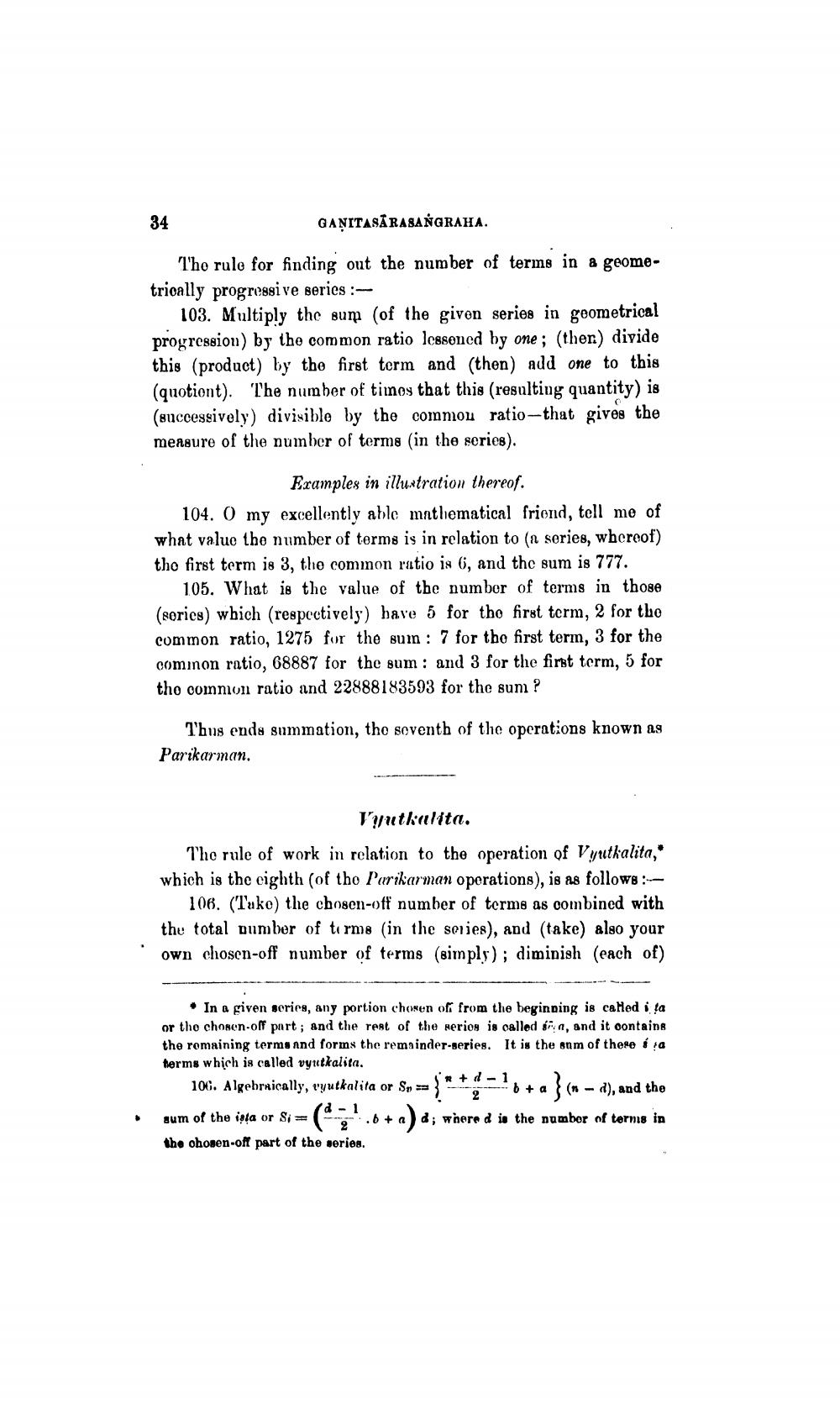________________
GANITASĀRASANGRAHA.
Tho rule for finding out the number of terms in a geometrically progressive series :
103. Multiply the sum of the given series in geometrical progression) by the common ratio lessoned by one ; (then) divide this (product) by the first term and (then) add one to this (quotient). The number of times that this (resulting quantity) is (successively) divisible by the commou ratio- that gives the measure of the number of terms in the series).
Examples in illustration thereof. 104. O my excellently able mathematical friend, tell me of what value the number of terms is in relation to (a series, whereof) the first term is 3, the common ratio is 6, and the sum is 777.
105. What is the value of the number of terms in those (series) which (respectively) bave 5 for the first term, 2 for the common ratio, 1275 for the sum : 7 for the first term, 3 for the cominon ratio, 68887 for the sum : and 3 for the first term, 5 for the common ratio and 22888183593 for the sum ?
Thus enda summation, the seventh of the operations known as Parikarman.
Vyutkalita. The rule of work in relation to the operation of Vyutkalita, which is the cighth (of tho Purikarman operations), is as follows :
106. (Tuko) the chosen-off number of terms as combined with the total number of time (in the series), and (take) also your own chosen-off number of terms (simply); diminish (each of)
• In a given series, any portion chosen of from the beginning is called i ļa or the chosen-olf part; and the rest of the periog is called fra, and it oontains the remaining terms and forms the remainder-series. It is the onm of these a terms which is called vyutkalita.
104. Algehrnically, vyutkalita or Sp = {*+ -?o+a} (n - A), and the aum of the ista or Si
whered in the number of terms in the chosen-off part of the series.
d




